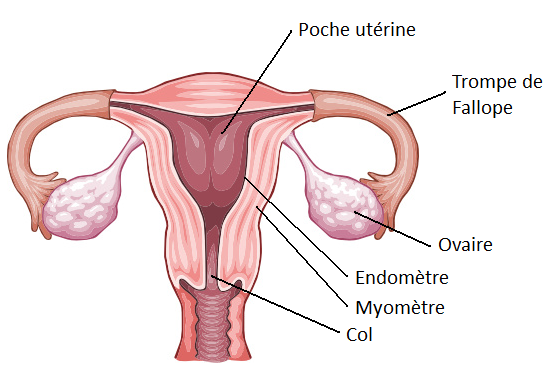-
 Empyema
Empyema
-
 Ruptured aneurysm
Ruptured aneurysm
-
 Karstic network
Karstic network
-
 Statin
Statin
-
 Node
Node
-
 Hysterography
Hysterography
-
 Polar bear
Polar bear
-
 Commissure
Commissure
-
 Conjecture
Conjecture
-
 Right ascension of a direction
Right ascension of a direction
-
 Sialography
Sialography
-
 HCFC
HCFC
-
 SEAL
SEAL
-
 Paleomagnetism
Paleomagnetism
-
 Light-year
Light-year
-
 Silurian
Silurian
-
 Pheochromocytoma
Pheochromocytoma
-
 Spectral colour
Spectral colour
-
 Laparoscopy
Laparoscopy
-
 Scambaiting
Scambaiting
-
 Spherolite
Spherolite
-
 Erenna
Erenna
-
 Strip
Strip
-
 Tombolo
Tombolo
-
 Kyoto Protocol
Kyoto Protocol
-
 Madrid protocol
Madrid protocol
-
 Lebanon cedar
Lebanon cedar
-
 Lead poisoning
Lead poisoning
-
 Donders rings
Donders rings
-
 Max Havelaar
Max Havelaar
Uterus
The uterus is an organ belonging to the female reproductive system.
Function of the uterus
The uterus is a bag intended to receive an embryo and promote its development. The internal mucosa of the wall, called endometrium, is sensitive to female sex hormones (oestrogens). The endometrium increases in thickness during the menstrual cycle to promote implantation of the future embryo. The cervix is closed by a plug of thick mucus which becomes thin and permeable to sperm only at the time of ovulation. If fertilisation does not take place, the endometrium degrades, causing menstruation.
Conversely, if fertilisation takes place, the egg migrates from the ovaries through the fallopian tubes and nidates in the uterus. The uterus can extend to 35 centimetres to fit the size of the foetus and placenta. At the time of childbirth the uterus undergoes muscular contractions of the myometrium to express the baby through the vagina.
Structure of the uterus
The uterus is located in the lower abdomen and is triangular in shape. The apex points downwards to the cervix which leads on to the vagina. The uterine horns are located on the sides and continue into a thin channel (the fallopian tubes) which lead to the ovaries.
The myometrium is formed from small muscle. The uterus is vascularised by the uterine artery.
Outside pregnancy, the uterus is approximately 4 centimetres by 8 centimetres in size.
 The uterus is a female productive system organ intended to receive the embryo and enable it to develop. © DR
The uterus is a female productive system organ intended to receive the embryo and enable it to develop. © DR
Latest
Fill out my online form.



